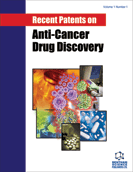Abstract
Thymidine phosphorylase (TP), also known as platelet derived endothelial cell growth factor (PD-ECGF), is an enzyme involved in thymidine synthesis and degradation and exerts an angiogenic activity, whereas N4 pentyloxycarbonyl- 5-deoxy-5-fluorocytidine, commonly called capecitabine (CAP), is a TP-activated oral fluorpyrimidine, which generates 5-fluorouracil (5-FU) within tumours. In addition to its classic antitumour activity, recent studies suggest that CAP may act as an antiangiogenetic molecule. Assessment of tumour microvessel density as expressed by endothelial cell TP positivity may identify the most vascularized and hence CAP-sensitive tumours. This review summarizes: (i) the biochemical and tissue expression of TP; (ii) the pharmacological profile of CAP as an anti-cancer compound and the central role of TP in its activation; (iii) the potential antiangiogenetic role of TP-activated CAP in tumours.
Keywords: Angiogenesis, anti-angiogenesis, tumour progression, thymidine phosphorylase
Recent Patents on Anti-Cancer Drug Discovery
Title: Thymidine Phosphorylase (Platelet-Derived Endothelial Cell Growth Factor) as a Target for Capecitabine: From Biology to the Bedside
Volume: 1 Issue: 2
Author(s): Girolamo Ranieri, Aldo M. Roccaro, Angelo Vacca and Domenico Ribatti
Affiliation:
Keywords: Angiogenesis, anti-angiogenesis, tumour progression, thymidine phosphorylase
Abstract: Thymidine phosphorylase (TP), also known as platelet derived endothelial cell growth factor (PD-ECGF), is an enzyme involved in thymidine synthesis and degradation and exerts an angiogenic activity, whereas N4 pentyloxycarbonyl- 5-deoxy-5-fluorocytidine, commonly called capecitabine (CAP), is a TP-activated oral fluorpyrimidine, which generates 5-fluorouracil (5-FU) within tumours. In addition to its classic antitumour activity, recent studies suggest that CAP may act as an antiangiogenetic molecule. Assessment of tumour microvessel density as expressed by endothelial cell TP positivity may identify the most vascularized and hence CAP-sensitive tumours. This review summarizes: (i) the biochemical and tissue expression of TP; (ii) the pharmacological profile of CAP as an anti-cancer compound and the central role of TP in its activation; (iii) the potential antiangiogenetic role of TP-activated CAP in tumours.
Export Options
About this article
Cite this article as:
Ranieri Girolamo, Roccaro M. Aldo, Vacca Angelo and Ribatti Domenico, Thymidine Phosphorylase (Platelet-Derived Endothelial Cell Growth Factor) as a Target for Capecitabine: From Biology to the Bedside, Recent Patents on Anti-Cancer Drug Discovery 2006; 1 (2) . https://dx.doi.org/10.2174/157489206777442241
| DOI https://dx.doi.org/10.2174/157489206777442241 |
Print ISSN 1574-8928 |
| Publisher Name Bentham Science Publisher |
Online ISSN 2212-3970 |
 3
3
- Author Guidelines
- Bentham Author Support Services (BASS)
- Graphical Abstracts
- Fabricating and Stating False Information
- Research Misconduct
- Post Publication Discussions and Corrections
- Publishing Ethics and Rectitude
- Increase Visibility of Your Article
- Archiving Policies
- Peer Review Workflow
- Order Your Article Before Print
- Promote Your Article
- Manuscript Transfer Facility
- Editorial Policies
- Allegations from Whistleblowers
Related Articles
-
Anti-Inflammatory Agents in Ageing and Age-Associated Diseases
Anti-Inflammatory & Anti-Allergy Agents in Medicinal Chemistry Recent Progress in the Development of Agonists and Antagonists for Melatonin Receptors
Current Medicinal Chemistry ERRATUM
Current Cancer Drug Targets The Therapeutic Properties of Carapa guianensis
Current Pharmaceutical Design A New Synthesis for Acacetin, Chrysoeriol, Diosmetin, Tricin and Other Hydroxylated Flavones by Modified Baker-Venkataraman Transformation
Letters in Organic Chemistry New Improved Drug Delivery Technologies for Pentacyclic Triterpenes: A Review
Protein & Peptide Letters Meet Our Editorial Board Member
Current Cancer Drug Targets Review and Research Analysis of Computational Target Methods Using BioRuby and In silico Screening of Herbal Lead Compounds Against Pancreatic Cancer Using R Programming
Current Drug Metabolism Dihydroresveratrol Type Dihydrostilbenoids: Chemical Diversity, Chemosystematics, and Bioactivity
Current Medicinal Chemistry RhoGEFs in Cell Motility: Novel Links Between Rgnef and Focal Adhesion Kinase
Current Molecular Medicine Patent Selections:
Recent Patents on Anti-Cancer Drug Discovery Novel Targeting of Apoptosis Pathways for Prostate Cancer Therapy
Current Cancer Drug Targets Inhibitors for Proteins Endowed with Catalytic and Non-Catalytic Activity which Recognize pTyr
Current Medicinal Chemistry An Overview of Current Applications of Nanotechnology in Biomedical Research: A Patent Survey
Recent Patents on Nanomedicine Targeting Microtubules to Inhibit Angiogenesis and Disrupt Tumour Vasculature:Implications for Cancer Treatment
Current Cancer Drug Targets Harnessing the Tumor Suppressor Function of FOXO as an Alternative Therapeutic Approach in Cancer
Current Drug Targets Cytochrome P450 2W1 (CYP2W1) in Colorectal Cancers
Current Cancer Drug Targets NFκB Pathway and microRNA-9 and -21 are Involved in Sensitivity to the Pterocarpanquinone LQB-118 in Different CML Cell Lines
Anti-Cancer Agents in Medicinal Chemistry Potential Anticancer Agents. I. Synthesis of Isoxazole Moiety Containing Quinazoline Derivatives and Preliminarily in vitro Anticancer Activity
Anti-Cancer Agents in Medicinal Chemistry Repurposing Disulfiram as An Anti-Cancer Agent: Updated Review on Literature and Patents
Recent Patents on Anti-Cancer Drug Discovery


























